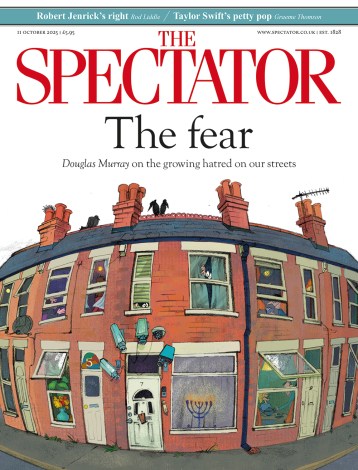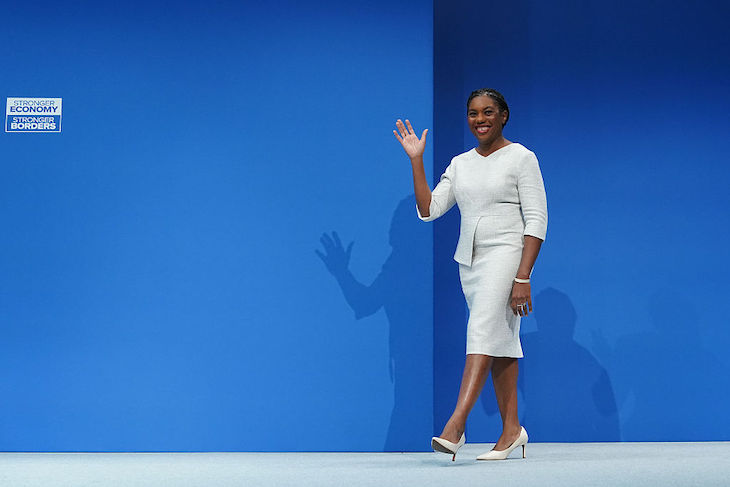A political party widely referred to as ‘the Tories’ has now existed – albeit with some rather serious discontinuities along the way – for just short of 350 years. The rise of Reform and apparently terminal decline of the Tories in the polls, Kemi Badenoch’s widely praised conference speech notwithstanding, has, however, made many start to think the hitherto unthinkable. Might the world’s oldest political party finally be on its way out? Could the Tories cease to be?
The Tories’ current woes certainly appear to constitute their lowest ebb since 1906 or 1846, or even the mid-18th century
The Tories’ current woes certainly appear to constitute their lowest ebb since 1906 or 1846, or even the mid-18th century. Their pro-globalisation economic liberalism, which became dominant under Thatcher and reached its grim denouement in the ‘Boriswave’, has disturbed the balance between their two historic guiding instincts: a love of tradition and institutional continuity, embodied ultimately in the nation, combined with a desire for liberty. It was the balance between these two instincts that made them the strongest brand in British politics for centuries. It was forgetting that that has caused them their current woes.
However, this balance of instincts has an enduring appeal to large swathes of the English people that is hard to write off. A party representing such instincts may disappear or hibernate for a while due to its failures or adverse circumstances, but it almost always reappears and manifests itself as a Tory party of some form or other, adapting itself to new contexts and challenges. I doubt this time will be any different, especially given that Reform appear to represent a brand of ‘right Jacobinism’ that wants to smash up, not conserve, our venerable institutions.
The Tories are hardly strangers to near-death experiences. Their first came when they were barely a decade old. The origins of the Tories were as the neo-Cavalier ‘Church and King’ grouping that, in the early 1680s, defended the accession of Charles II’s brother, James, Duke of York, to the throne despite his conversion to Roman Catholicism. The Church of England’s doctrine of divine-right monarchy meant that the Tories had to defend the accession even of a Roman Catholic heir against the Whigs’ desire to let Parliament appoint a non-Catholic monarch. This soon came back to bite them when, having become King, James started to vigorously promote the Old Faith and undermine the Church of England’s dominance.
This presented the Tories with a terrible dilemma: the lodestars of their political universe, the Church and the King, had come into fatal conflict. It was made worse by the fact that they had made the doctrine of passive obedience to the monarch’s will one of their chief principles. As a wag at the time observed to one Tory, ‘you have made a turd pye, Seasoned it with passive obedience, and now you must eat it your Selves’.
After much soul-searching, the Tories chose the Church and acquiesced in the overthrow of James II in 1688. Many assumed that this was a death-knell for the party: how could a party that had just gone back on one of its chief founding principles retain any credibility? They did not reckon with the ideological adaptability of the party: Tory ideologues soon argued that, in fact, they owed ‘passive obedience’ not to the monarch, but to the tripartite constitution consisting of King, Lords and Commons. James II had defied the Lords and Commons: by winking at his deposition, the Tories argued that they were only being truly loyal to the underlying spirit of the constitution.
Indeed, the Tories soon made a virtue out of necessity and in the 1690s became thorns in the side of the new monarch, William III. As well as not being the divinely ordained heir, William was a Dutchman who wanted to increase taxes and debt to pay for his war with the catholic superpower of Europe, Louis XIV’s France. So the Tories, previously the party of the court, became the proto-nationalist party of the ‘country’: of resisting William’s ruinous agenda of ‘forever wars’, crushing taxes and employing dastardly Dutch foreigners.
During the reign of William III and Anne, this position – plus their enduring defence of the Church – made them the majority party in the country, winning most of the era’s numerous elections (ten in twenty years between 1695 and 1715). It was only the accession of the new German monarch from Hanover in 1714, incorrigible Whig George I, that scuppered them. They were then plunged into decades of opposition, having been proscribed from government office by the new regime.
The nearest that the Tory brand came to oblivion was when George III became King in 1760. Ironically, the source of their weakness – their proscription – proved to also be the source of their cohesion, and they splintered, most going over to support the new King’s policies. However, as the French Revolution dawned and inspired a new wave of popular loyalism, and the dominant Whigs split into more radical and conservative factions, ‘Toryism’ reappeared and by the 1810s a party explicitly calling themselves ‘the Tories’ were in power again. Many were from families who had been the backbone of the earlier Tory party. They remained the party of the Church and landed interest, of the nation’s institutional bases of continuity.
Another shock, Robert Peel’s repeal of the Corn Laws in 1846, once again rocked the Tories, splitting them between their protectionist majority and free-trading minority. As a result, they were mostly in opposition for the next 30 years, but Disraeli and then Lord Salisbury were highly successful in remaking the party in an age of mass politics by their usual process of social continuity, pragmatic embrace of new interests, and ideological adaptation. Since the 1880s, albeit with important blips (1906, 1945, 1997) the Tories have generally dominated British politics, successfully adapting to new circumstances again and again.
Today might seem different. But history shows that the Tory party has a way of bouncing back, despite the odds. So no matter how bleak times seem to Tories now, I’ll wager that, in ten or 20 years’ time, people calling themselves ‘Tories’ will still be alive and kicking in our political system, in some shape or form. The brand and the instincts it represents are too strong to die.







Comments